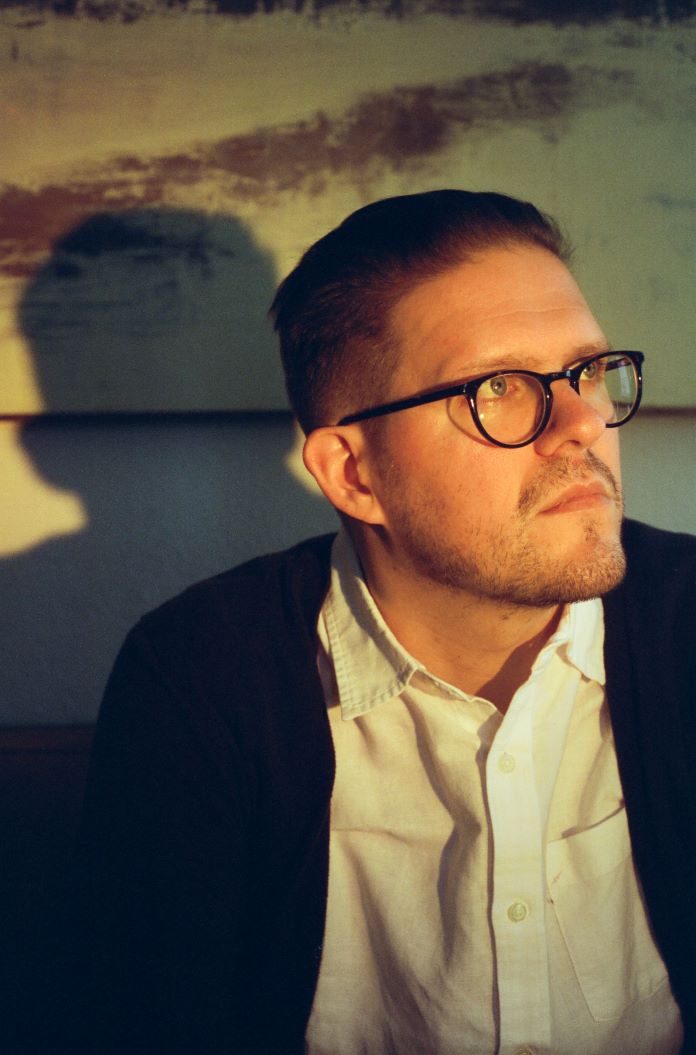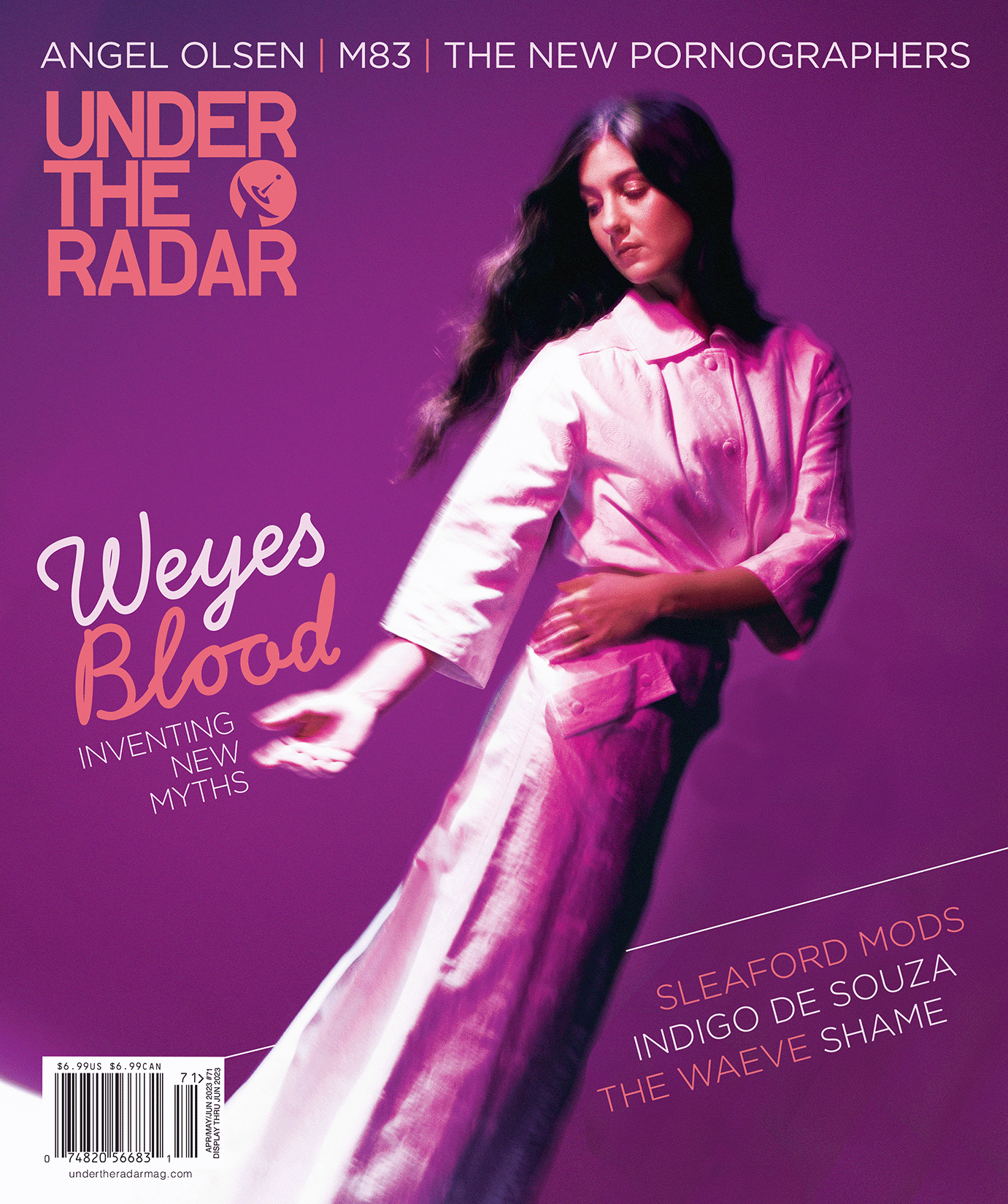
Premiere: Jordan Lehning Debuts New Song “1234 Evermore”
Three Colored Wall Coming August 6th
Aug 05, 2021
Photography by Zac Farro
![]()
Nashville-based singer/songwriter, producer, and multi-instrumentalist Jordan Lehning is sharing his fourth full-length album, Three Colored Wall, tomorrow. Coming exactly a year after his cinematic third album, Little Idols, the new record is the completion of a project Lehning began ten years ago. The COVID-19 pandemic slowed his breakneck pace of creation, allowing Lehning to return to the set of half-finished songs, rediscovering a record of fables examining grief, loss, and death, all filtered through layered indie pop soundscapes.
The full record comes out tomorrow, but Lehning is sharing one final taste of the album with his new song, “1234 Evermore,” premiering with Under the Radar.
Elsewhere on the record Lehning crafts moody and hypnotic instrumentals befitting the morbid subject matter, such as the lead single, “Static.” In comparison, “1234 Evermore” is upbeat and hook-laden, full of handclaps, pounding keys, and vocoder-soaked melodies. Lyrically, the song meditates on the dichotomy of love, the way it can bring joy and pain in equal measure一“To be in love is terrible. To be in love is wonderful.” It’s a fantastical interpretation of the intoxicating danger of being in love, recreating love’s highs and lows through dazzling technicolor indie pop.
Check out the song below and watch for Three Colored Wall, coming tomorrow, August 6th. You can also read our exclusive Q&A with Lehning below, discussing Three Colored Wall and “1234 Evermore.”
Why did you step away from finishing the album initially?
Life got really busy in 2011. I was always juggling 5 or more projects and was about to become a father. The nature of the record was very process centric so I knew it required an unusually large amount of focused time that I would rarely have.
What led you back to the album?
I find myself to be a seasonal creator and this record always felt like summertime. I wrote and recorded a large portion of it in the summer of 2011 and each summer I’d come back to it in one way or another. A few summers ago I got the itch and opened the sessions for “Static” and “No Memories Barred” and began working on them again. That felt effortless and really rewarding. Then I faced the rest of the record, which was in a sense covered in dust and mold and would need a serious amount of attention to get them where I got the first 2 songs.
Lockdown came weeks after the completion of Little Idols, so I was suddenly in a position to put the time and energy back into completing these thoughts. I had been writing another record altogether but knew how unique this freedom was, so I set out to complete it.
What was it like revisiting these songs?
When lockdown had begun I was lucky enough to have several records underway that kept me employed throughout the pandemic. In order to do the other records and Three Colored Wall in tandem I began a daily routine. Before work each morning I would write a short piano piece. Then from 9am to noon I’d work on one of the records. I’d take lunch at noon then at 12:30 to 2:30 I’d work on another record. Then, at 3pm I’d start on Three Colored Wall and work until 6 or later. I had also bought a batch of psilocybin pills for microdosing that I’d take if I felt fatigued which might happen around 4pm. What I did not anticipate was an intense anxiety from the come down that I’d counter with drinks. The next day would be challenging and when I faced work it would be accompanied by a heavy depression. The psilocybin usage didn’t last too long. For me, coffee is still the most fruitful substance.
To answer your question, it was painful. Typically, work is work. You roll up your sleeves and try to do a good job. But with this I was assuming the roll of a 10 year younger self. It was reanimation. I felt like a snake trying to decorate itself in the skin it had shed so long ago. There would be fluid moments but all in all it felt like hiking with a narcoleptic and carrying them most of the way. Beyond that, the subject matter was intense for me to revisit. It deals with our relationship with grief and trauma and resurfacing those old ghosts and attempting closure yet without end. Inevitably, you merely relive that grief. Finishing this record was in itself an exhumation and facing my younger self became its own cautionary tale.
How has the album changed since its inception?
The album is basically what I’d always wanted it to be. I call it “Fantasy Pop.” It’s very technicolor and dream like. There are images I’ve always associated with each song, and when I picked it back up I kept those images clear in my mind. When I started it in 2011, I didn’t have the means to get it to where I was now able. “Fog In The Looking Glass” and “Driving Slowly To The County Fair” we’re written last year to bridge certain songs once the album sequence was realized. I also hadn’t considered segueing the entire record until I saw how “Static” could play into “No Memories Barred.”
Did you find yourself gravitating towards new musical influences when making the record?
No. I unfortunately don’t have much bandwidth for recreational listening. This is one of the downsides of making music for a living. Plenty of my peers and colleagues don’t share this problem, but I can only really enjoy new music if I’m on vacation or on a long drive. My influences are mostly art, film, and literature, and for me they’ve been more insightful than other music. I call it transmigration or cross pollination of the arts. I have a large projector in my studio and was playing Wizard of Oz and Georges Melies on repeat. Another favorite was a stunning live action Russian version of Little Mermaid from 1976. That and the Melies were hugely informative in regards to tone and mood.
You’ve said about your previous album Little Idols that it was a reflection of your interest in the “potential of the modern album.” Do you see that reflected in Three Colored Wall as well?
Yes. I’m attempting to reach beyond a collection of songs. There are passages in certain literature that are unquestionably alive and I do think the purpose of the artist is to create art that lives. The inception of Three Colored Wall did begin as a collection of pop songs, so steering it towards something that reflected an organism was a challenge. I stayed true to the tone and allowed it to be as odd as it wanted. Whether or not it breathes I can’t say, but I’m pleased with how it turned out.
You’ve also described the album as a set of short stories. What would you say is the common theme or connection between them?
The album is a collection of cautionary fairy tales that attempt to warn the audience against dwelling too long on grief, trauma, and the dead.
What’s the story of “1234 Evermore?”
This is on the dichotomy of love. “To be in love is terrible. To be in love is wonderful. It’s a weakness that we all must face. It’s a choice that nobody can make.” The sound, in the beginning, is a dangerously large Venus flytrap that represents the vice grip that sex holds over everyone. It’s comedic that we put ourselves through such hell. But this is our nature. It’s self-imposing schadenfreude.
Most Recent
- Picnic at Hanging Rock [4K UHD] (Review) —
- Joe Goddard of Hot Chip Announces New Album, Shares Video for New Song “Moments Die” (Feat. Barrie) (News) — Joe Goddard, Hot Chip
- Premiere: O Slow Shares New EP ‘Every Time I Look In The Mirror’ (News) — O Slow
- Glasgow’s The Joy Hotel Unveils Debut Single “Jeremiah” (News) — The Joy Hotel
- One Million Love Songs (Review) — Bnny


Comments
Submit your comment
There are no comments for this entry yet.